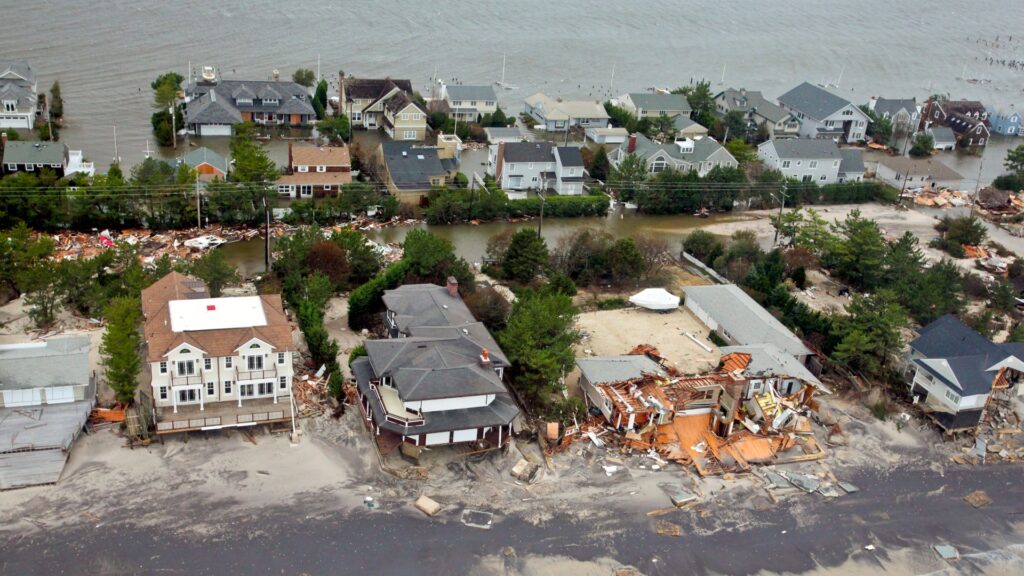
The devastating effects of climate change are becoming harder to ignore, and nowhere is this more evident than in the United States coastal cities. Rising sea levels, fueled by melting ice caps and increasingly violent storms, threaten to erase parts of America’s most beloved cities. From iconic tourist destinations to historic towns, these places may be uninhabitable by 2050. Here’s a closer look at the 17 U.S. cities most at risk of disappearing beneath the waves. Visit them while you still can.
17. Norfolk, Virginia
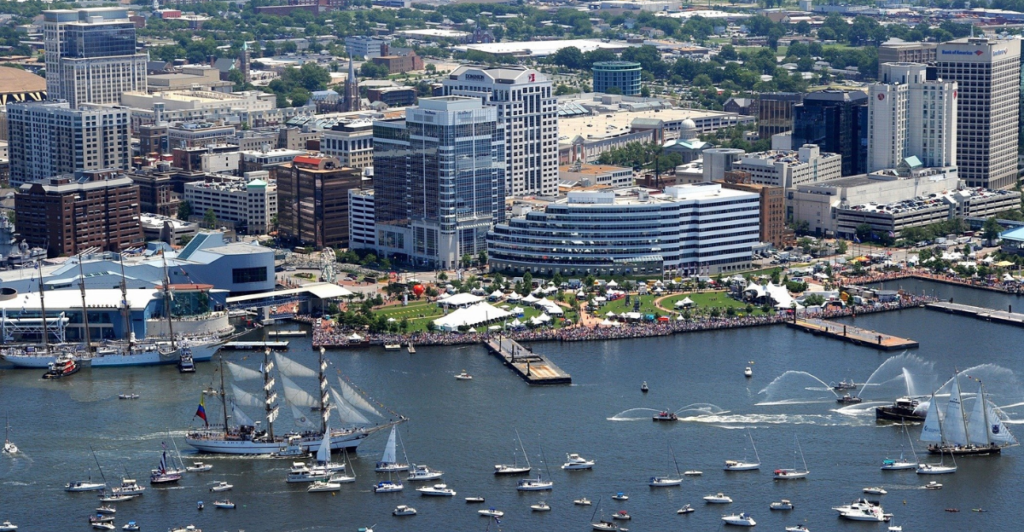
Norfolk, Virginia, is a bustling coastal city with a long-standing naval and maritime heritage. Unfortunately, its proximity to the ocean makes it incredibly vulnerable to rising sea levels. The city has already faced severe flooding in the past, notably during Hurricane Isabel in 2003, which caused widespread damage. Experts predict that by 2040, significant parts of Norfolk will experience chronic flooding, rendering many areas unlivable. This is due to a combination of rising seas and sinking land caused by subsidence. Efforts to combat flooding, like constructing sea walls, may slow the process but likely won’t be enough to save the city’s most at-risk areas.
Estimated year: By 2040
16. Annapolis, Maryland
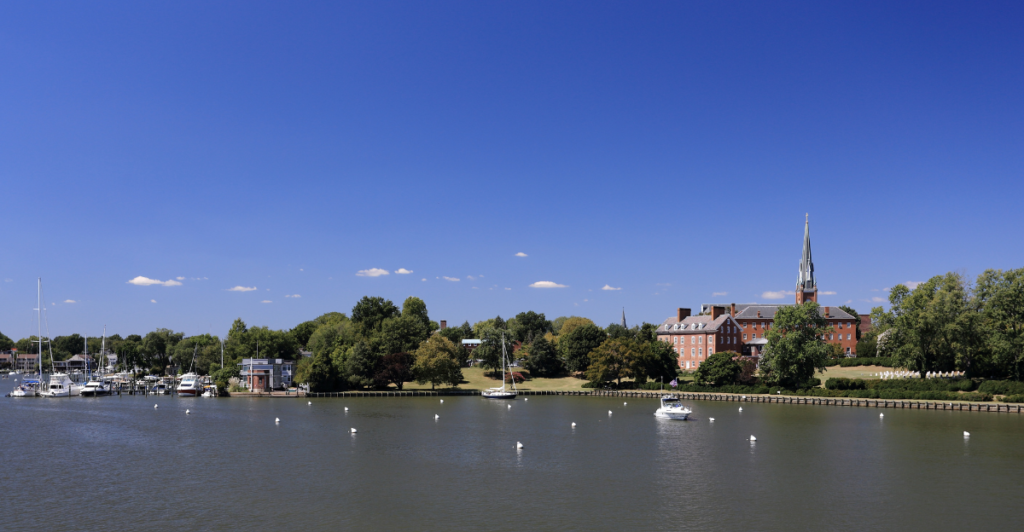
Known as America’s sailing capital, Annapolis is famous for its charming waterfront and historic sites, including the U.S. Naval Academy. But this picturesque city is already experiencing the early effects of rising seas. Flooding has become a common occurrence in Annapolis, with its downtown area regularly inundated during high tides. By 2050, much of the city could be underwater, jeopardizing not only its historic buildings but also its economy, which relies heavily on tourism and maritime activities. On Maryland’s eastern shore, some towns may lose a third of their property tax base due to unrelenting flooding.
Estimated year: By 2050
15. Miami, Florida
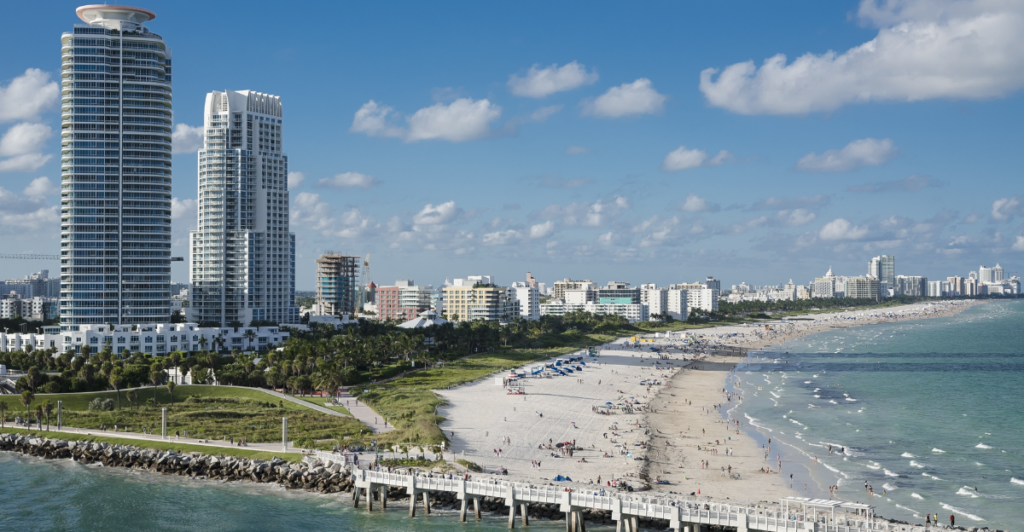
Miami’s glittering beaches, nightlife, and vibrant culture make it a top destination for travelers, but the city’s future looks grim. Located just a few feet above sea level, Miami is extremely susceptible to flooding from rising seas and storm surges. Some experts predict the city may face insurmountable challenges before 2050. Chronic flooding and the astronomical costs of maintaining its coastline could force residents and businesses to retreat inland. Miami’s famous beaches, the lifeblood of its tourism economy, are already disappearing. Without significant intervention, Miami could be one of the first major U.S. cities to face mass displacement due to climate change.
Estimated year: Before 2050
14. Atlantic City, New Jersey
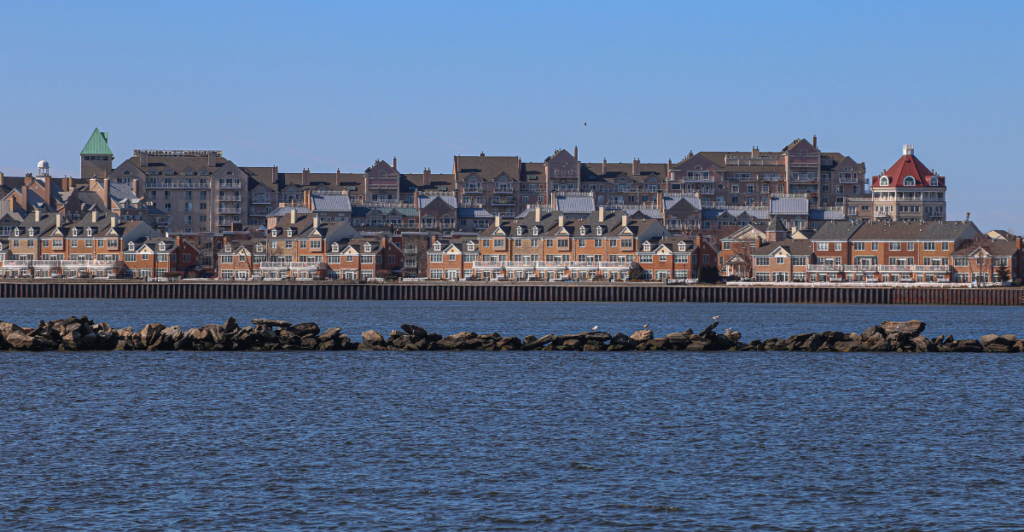
Atlantic City is well-known for its casinos, boardwalk, and beaches, but these attractions are at serious risk. Rising sea levels, coupled with powerful storms like Hurricane Sandy, have already wreaked havoc on this coastal city. Predictions suggest that by 2050, much of Atlantic City’s waterfront will be submerged, and its boardwalk—a symbol of its identity—could become a relic of the past. Tourism, the backbone of its economy, will undoubtedly suffer, leaving residents with fewer resources to adapt to the worsening effects of climate change.
Estimated year: By 2050
13. Key West, Florida
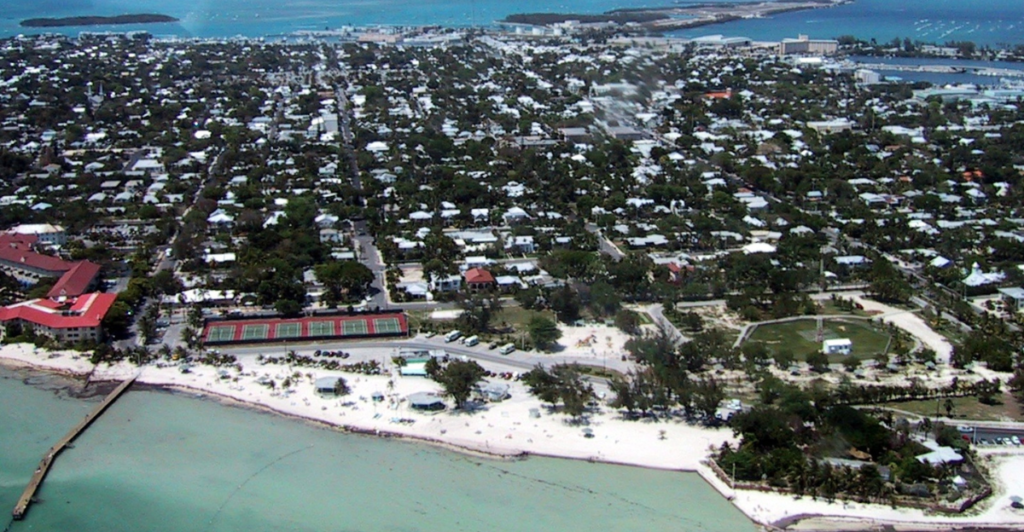
Key West, a tropical paradise known for its sunsets and Hemingway’s house, faces a bleak future. Its low elevation and island geography make it particularly vulnerable to sea level rise. By 2060, it’s estimated that over 60% of Key West’s land will be flooded. Even sooner, critical roads and infrastructure are expected to be underwater, making the island increasingly difficult to access. For residents and tourists alike, this means adapting to rising waters or bidding farewell to this beloved destination.
Estimated year: By 2060
12. Galveston, Texas
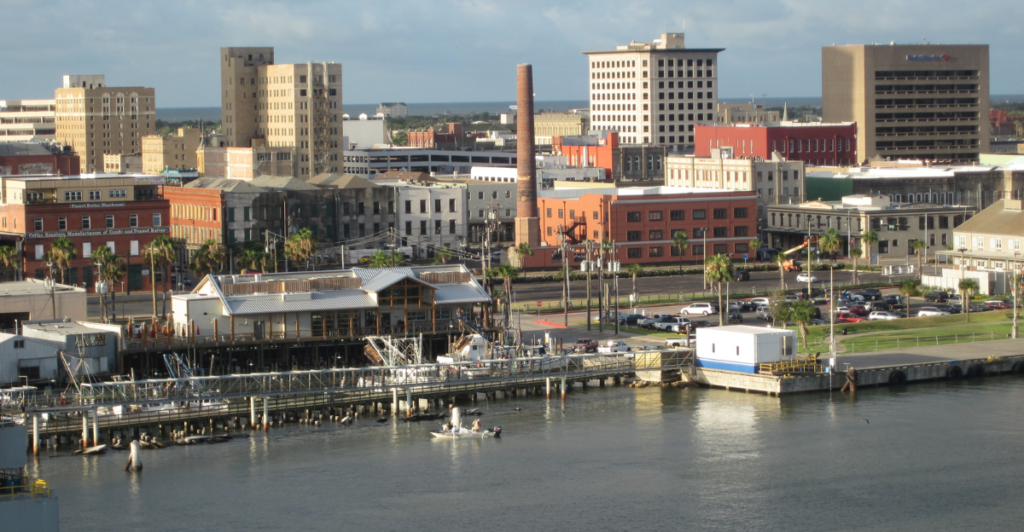
Galveston is a popular Gulf Coast getaway, but its days as a vacation hotspot may be numbered. Rising sea levels and more frequent hurricanes are already taking a toll. By 2060, nearly half of the city’s livable land could be underwater, with even more flooding predicted by the end of the century. The city’s historic district and beaches, which attract millions of visitors each year, are at significant risk. Without drastic climate action, Galveston’s charm may be lost to the sea.
Estimated year: By 2060
11. Seattle, Washington
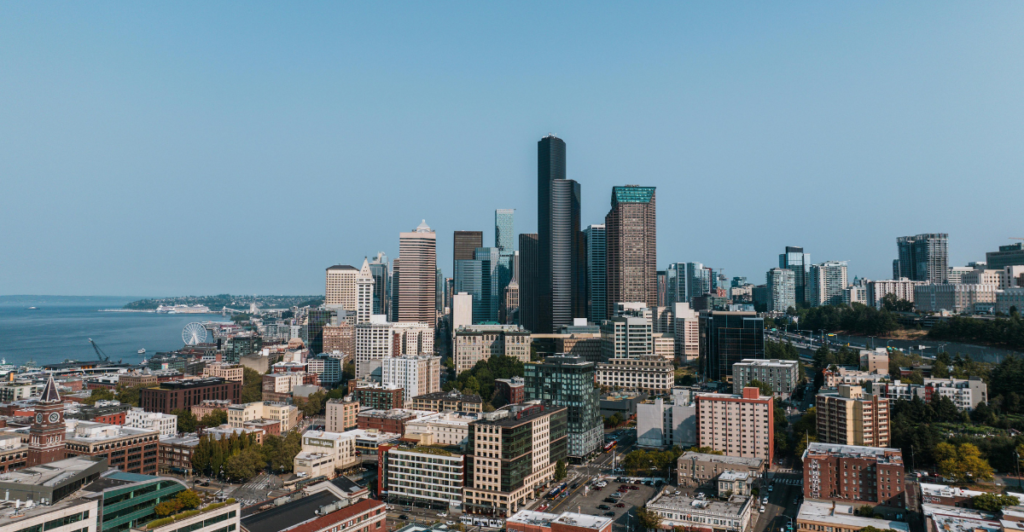
Seattle might not be the first city that comes to mind when thinking of rising sea levels, but it’s not immune to the effects of climate change. Low-lying neighborhoods like Georgetown, Harbor Island, and South Park are particularly vulnerable. By 2050, scientists predict that these areas could experience chronic flooding during high tides, impacting homes, businesses, and vital infrastructure. While Seattle has plans to mitigate some of these risks, such as raising sea walls, the long-term outlook remains uncertain.
Estimated year: By 2050
10. St. Pete Beach, Florida
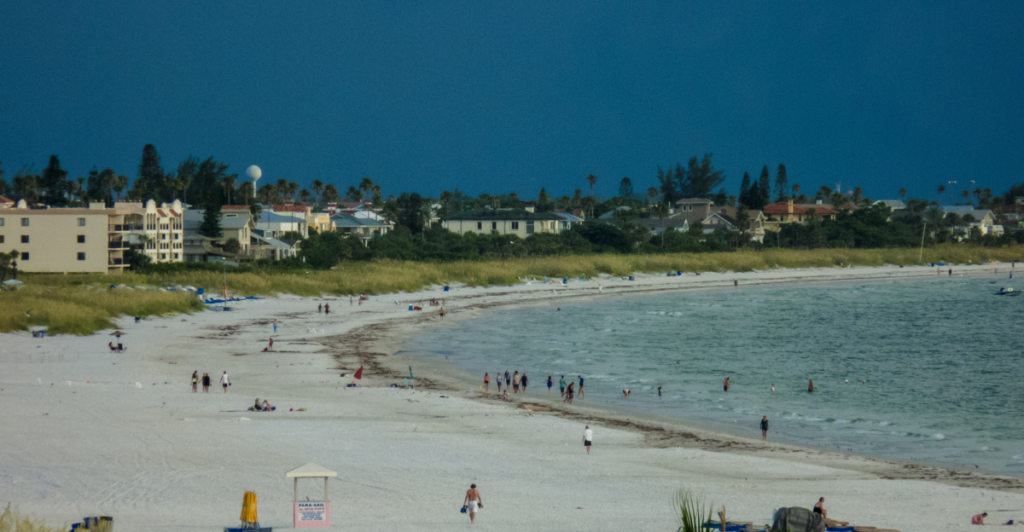
St. Pete Beach is synonymous with sun, sand, and relaxation. Unfortunately, its low elevation puts it on the front lines of sea level rise. By 2060, nearly half of its livable land is expected to be underwater. As the shoreline recedes, the city’s economy, heavily reliant on beach tourism, will face significant challenges. Projections indicate that by 2100, almost all of St. Pete Beach could be submerged, leaving behind only memories of its sunny shores.
Estimated year: By 2060
9. Tybee Island, Georgia
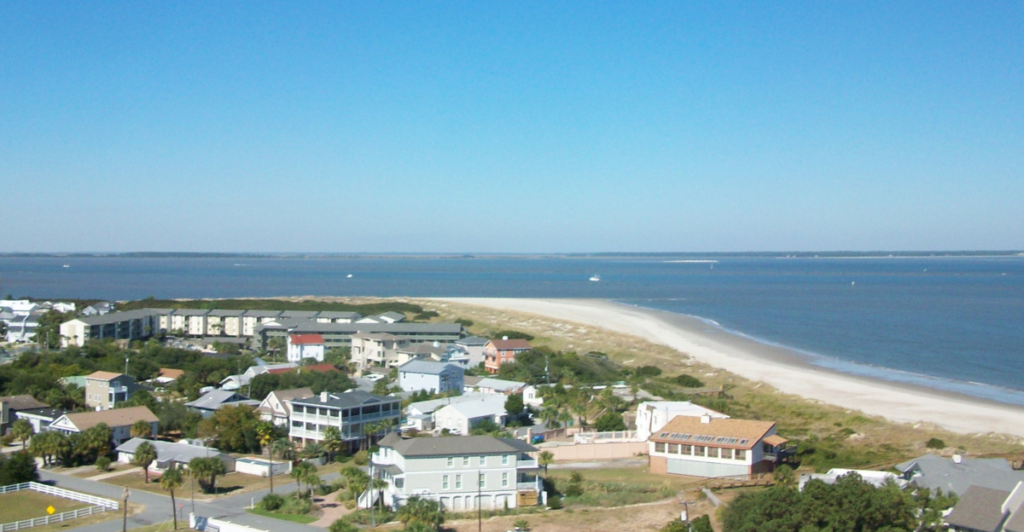
Tybee Island, a beloved vacation spot near Savannah, Georgia, is already seeing the effects of climate change. Rising waters threaten to submerge up to 30% of the island’s land by 2060. The picturesque beaches and charming cottages that attract visitors are at risk of disappearing. Savannah itself may also face flooding, endangering its historic waterfront and stunning antebellum architecture. Efforts to bolster the island’s defenses may buy some time, but the long-term prognosis is dire.
Estimated year: Before 2060
8. Charleston, South Carolina
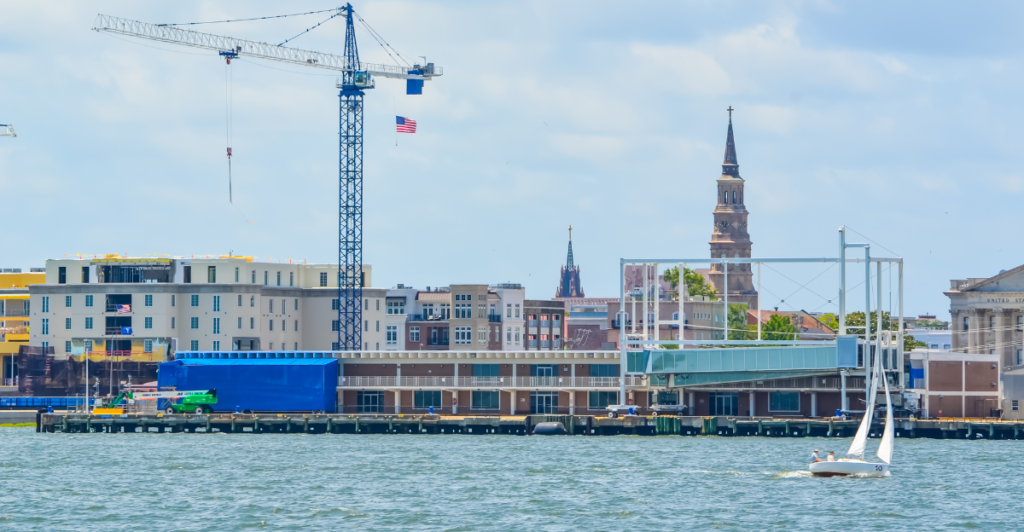
Charleston’s historic charm and coastal beauty make it a popular tourist destination, but these same qualities make it vulnerable to rising seas. By 2060, about a quarter of the city’s land could be underwater, with historic neighborhoods like the Battery and French Quarter, particularly at risk. Chronic flooding from high tides and storms is already a problem, and experts warn that the situation will only worsen. Charleston’s efforts to protect its historic districts may not be enough to save them in the face of rising sea levels.
Estimated year: By 2060
7. New Orleans, Louisiana
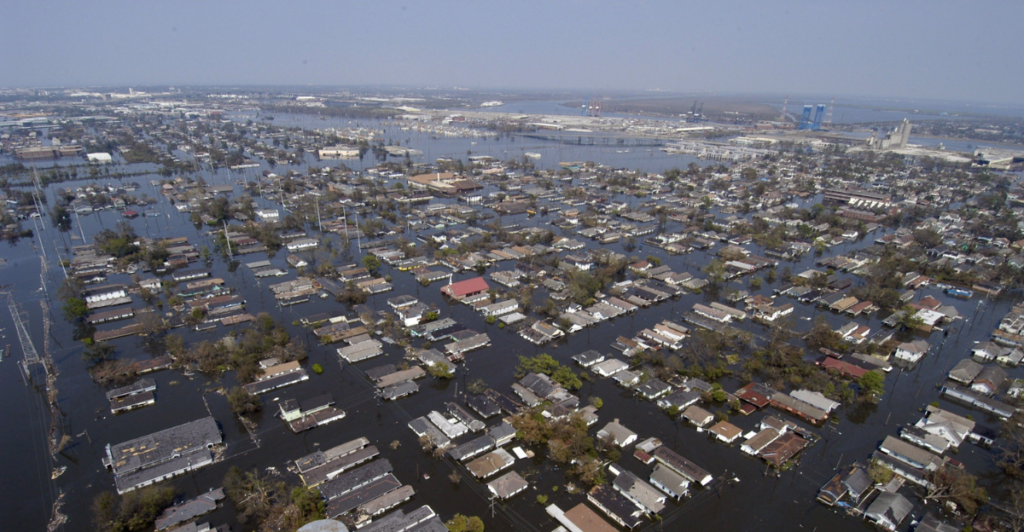
New Orleans is no stranger to flooding, as Hurricane Katrina tragically demonstrated in 2005. Despite ongoing coastal restoration projects, the city faces an uphill battle against rising seas and land subsidence. By 2040, significant portions of New Orleans could be uninhabitable. The iconic French Quarter and other low-lying areas are particularly vulnerable. Experts warn that without drastic intervention, the city’s rich cultural heritage could be at risk of being lost forever.
Estimated year: By 2040
6. Los Angeles, California
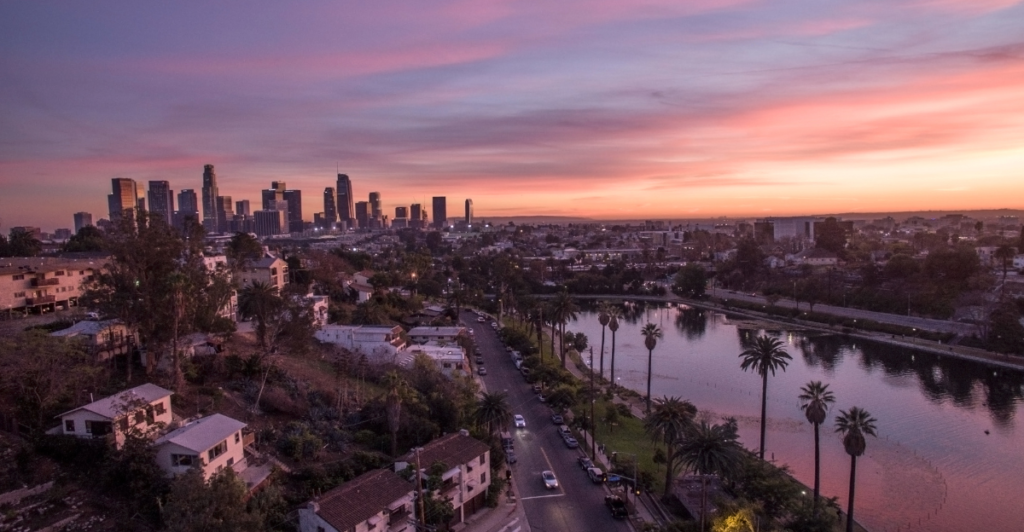
Los Angeles’ sprawling coastline includes iconic spots like Venice Beach and Santa Monica, but these areas are highly susceptible to sea level rise. By 2050, up to $9 billion worth of property could be underwater, with popular beaches and waterfront neighborhoods at the greatest risk. As the ocean encroaches, the economic and social impacts on LA’s residents and businesses will be profound. Inland areas may remain safe, but the city’s coastal identity could be forever altered.
Estimated year: By 2050
5. San Diego, California
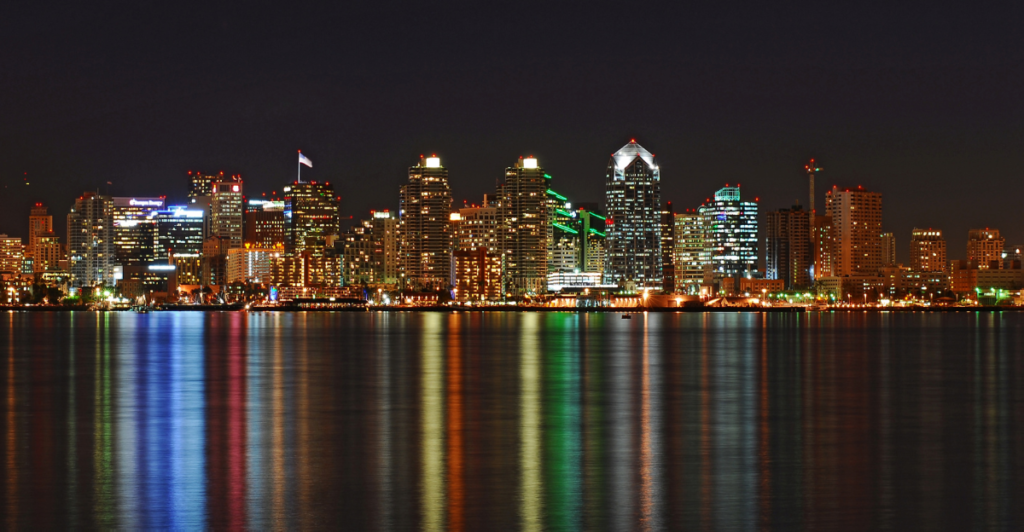
San Diego’s picturesque beaches and vibrant waterfront are at serious risk from rising sea levels. Scientists predict that tides could rise by one to four feet by 2050, flooding significant portions of the city. Popular destinations like Mission Beach and Coronado may be underwater, forcing residents and businesses to relocate. The city’s tourism industry, a vital part of its economy, will undoubtedly suffer as beaches and waterfront attractions disappear beneath the waves.
Estimated year: By 2050
4. Fort Lauderdale, Florida
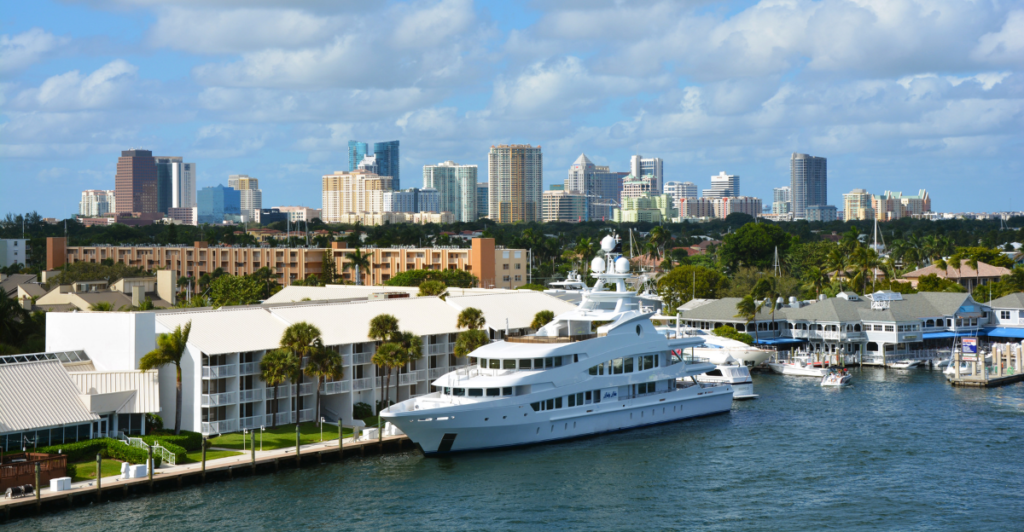
Fort Lauderdale’s intricate network of canals and waterways has earned it the nickname “Venice of America,” but this distinction comes with a price. Rising sea levels could render much of the city uninhabitable by 2040. Beaches and coastal neighborhoods are already experiencing flooding during high tides, and this problem is expected to worsen. The city faces the dual threat of storm surges and groundwater intrusion, which could lead to failing infrastructure and a mass exodus of residents. Without aggressive mitigation efforts, Fort Lauderdale may become one of the most striking examples of climate change’s impact on urban centers.
Estimated year: By 2040
3. Honolulu, Hawaii
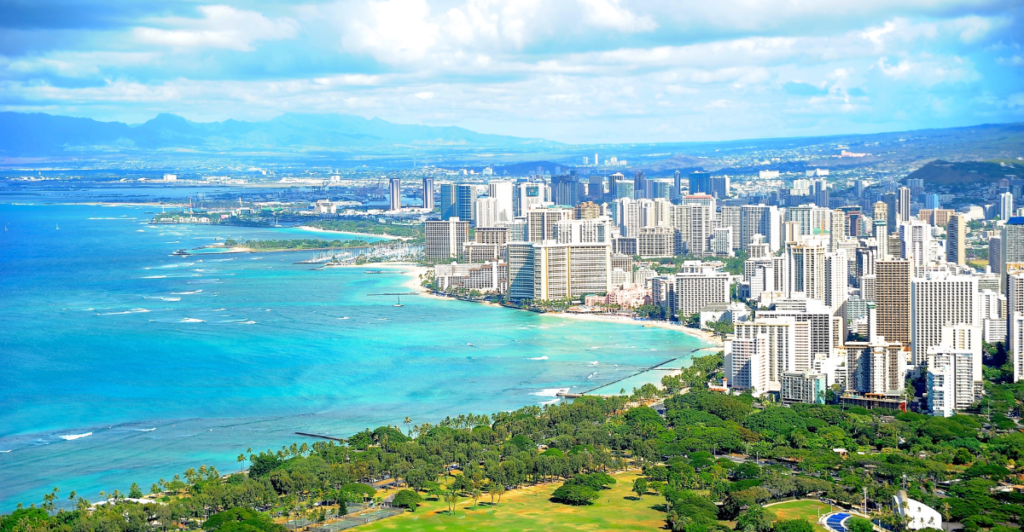
Honolulu is a paradise under siege from rising sea levels and coastal erosion. By 2050, much of the city’s low-lying areas, including Waikiki Beach, could be partially submerged. This would be devastating for the local economy, which relies heavily on tourism. Additionally, sea level rise threatens critical infrastructure, including Honolulu International Airport and major highways. With limited space to retreat inland, Hawaii faces unique challenges in adapting to climate change. For residents, the prospect of losing their homes and cultural landmarks is a sobering reality.
Estimated year: By 2050
2. New York City, New York
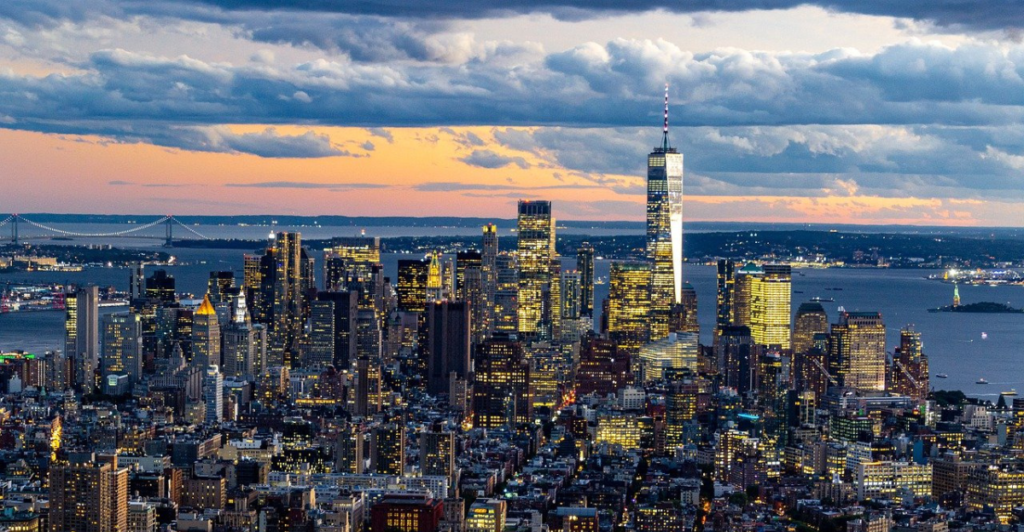
New York City, the bustling financial and cultural capital of the U.S., faces an alarming future due to rising sea levels. Lower Manhattan, home to Wall Street and the World Trade Center, is particularly at risk. By 2050, parts of the city could be underwater during high tides, with storm surges causing even more extensive damage. The devastation wrought by Hurricane Sandy in 2012 offered a glimpse of what the future holds. Billions of dollars are being invested in seawalls and flood barriers, but experts warn that these measures may only delay the inevitable.
Estimated year: By 2050
1. Boston, Massachusetts
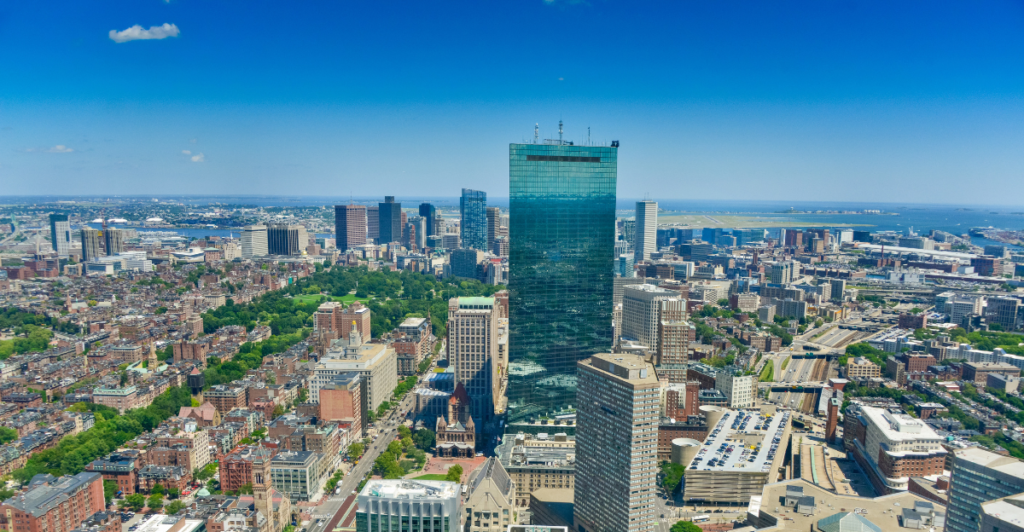
Boston’s historic charm and coastal location make it one of the most vulnerable cities to sea level rise in the U.S. By 2050, parts of Boston’s waterfront, including the Seaport District, could be inundated. Flooding events are already increasing in frequency, causing damage to homes, businesses, and infrastructure. The city has ambitious plans to create green infrastructure and elevate vulnerable areas, but the long-term outlook remains grim. As water encroaches, Boston may lose not only its physical landmarks but also its place as a thriving hub of innovation and culture.
Estimated year: By 2050
Discover more of our trending stories and follow us to keep them appearing in your feed

You May Also Like:
Dormant for 800 Years, This American Volcano Is Waking Up
The 13 Fastest Flying Animals in the World Ranked
10 Most Expensive Bulls Ever Sold – Every Farmer’s Dream
America’s Top 12 Most Dangerous Beaches
References:
17 USA Cities That Will Be Underwater By 2050
Map shows US cities that could be underwater in 2050
U.S. Cities Most Impacted By Sea Level Rise
NASA Study: Rising Sea Level Could Exceed Estimates for U.S. Coasts
Stay connected with us for more stories like this! Follow us to get the latest updates or hit the Follow button at the top of this article, and let us know what you think by leaving your feedback below. We’d love to hear from you!







